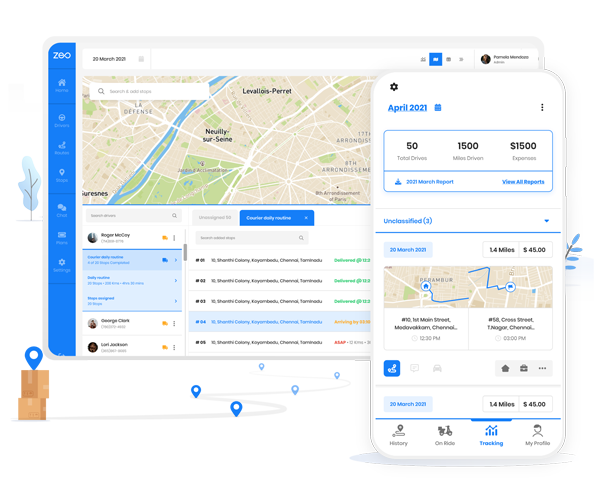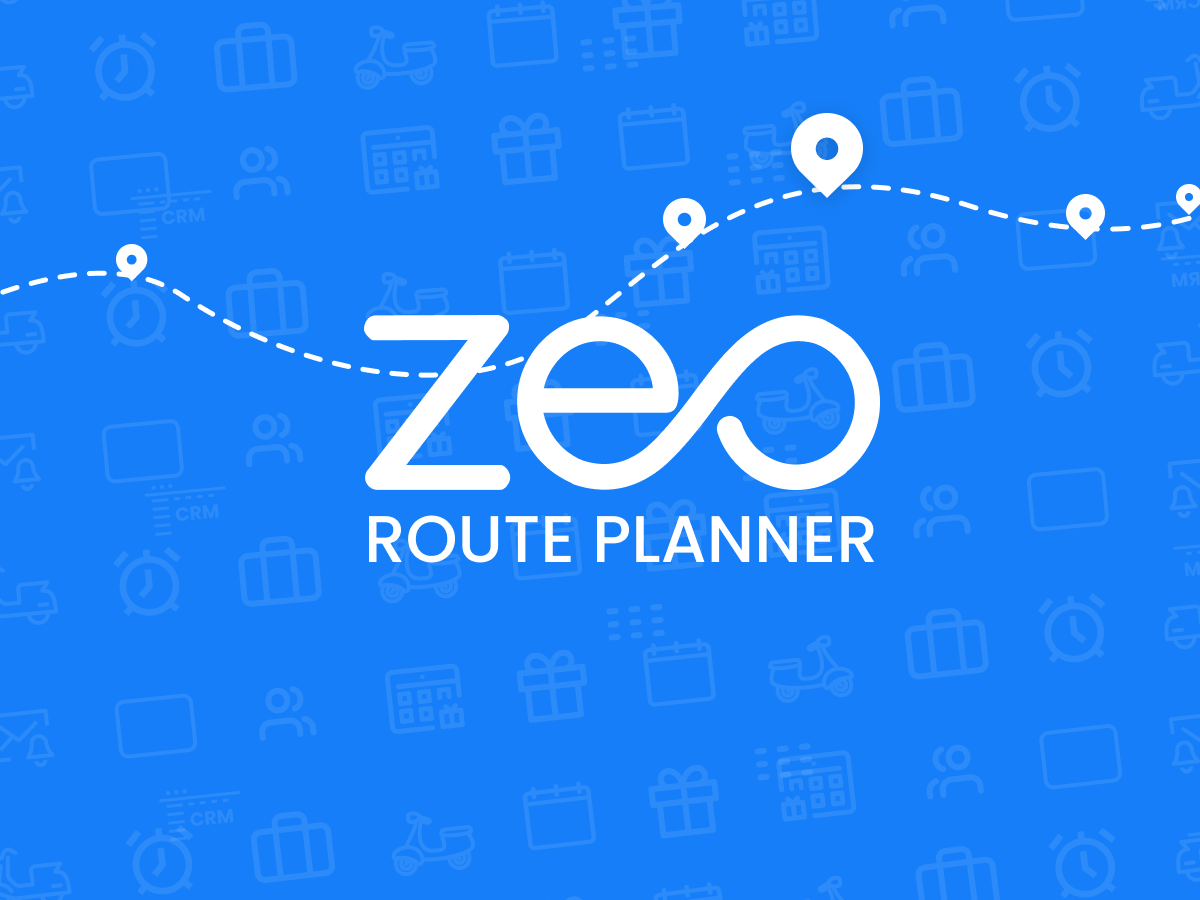Updated on: July 21, 2025
Imagine this: you’re managing a fleet that needs to cover 50 or even more deliveries in a day. Every route has multiple stops, different schedules, and different demands, creating a logistical puzzle that seems impossible to solve. The stakes are high as every missed stop or delayed delivery costs you more than just fuel. It eats into your profits, wastes your resources, and frustrates your customers. So, the question is: why not leverage multi-stop route optimization?
With route optimization, you can turn chaos into clarity and achieve seamless operations. Optimizing your multi-stop route is not just about getting from point A to B, it’s about making your entire delivery network smarter and more efficient.
Challenges of Managing Multi-Stop Routes
Handling multi-stop routes comes with unique hurdles, each of which can weigh down your operations. Let’s explore the critical challenges that businesses face when dealing with multiple stops on a single route.
- Multiple Variables to Consider
Planning a multi-stop route is not just a matter of connecting the dots. Each stop comes with its own specific requirements: customer delivery windows, traffic conditions, vehicle capacities, and driver breaks, to name just a few. Without optimum route optimization, keeping track of these variables often results in inefficient routes that waste time, fuel, and resources. For a growing business, this inefficiency becomes a major barrier to scaling operations. - Increased Fuel and Other Costs
One of the most immediate challenges with poorly optimized multi-stop routes is the sheer cost of fuel. The longer your drivers spend on the road, the more you’re paying for fuel, not to mention the additional wear-and-tear on your vehicles. Multi-stop routes that aren’t optimized lead to backtracking, unnecessary detours, and long idle times, all of which add to operational costs. - Delivery Delays
The more stops you add to a route, the greater the risk of delays. Every late stop can push the next delivery back, creating a ripple effect that impacts your entire schedule. This not only frustrates customers but also damages your brand reputation. Consistent delays could cost you repeat business. Optimizing your multi-stop routes can significantly reduce the risk of delays, ensuring smoother deliveries and happier customers. - Inefficient Use of Resources
An unoptimized multi-stop route not only wastes fuel but also underutilizes or overutilizes your fleet. Drivers may end up driving longer distances than necessary or hitting stops out of sequence, which diminishes productivity. The more time your vehicles and drivers spend on the road without making deliveries, the more you’re spending on labor, vehicle maintenance, and fuel. This inefficient use of resources is one of the biggest factors hindering business growth.
Also Read: Adding Multiple Stops on Google Maps: Tips and Tricks.
The Importance of Route Optimization for Multi-Stop Routes
For businesses handling deliveries with multiple stops, optimization can mean the difference between operational chaos and seamless delivery. Let’s take a closer look at how route optimization transforms multi-stop delivery management.

increase fuel savings
Save 2 Hours on Deliveries, Everyday!
Optimize routes with our algorithm, reducing travel time and costs efficiently.
Get Started for Free
- Faster Deliveries
When your routes are optimized, your drivers follow the most efficient path, cutting down on time spent in traffic or navigating inefficient routes. This results in faster deliveries, which means happier customers. Faster deliveries also allow your drivers to complete more stops within their shift, enhancing productivity. The speed of your service directly influences customer loyalty, making it critical for businesses looking to scale. - Lower Operational Cost
Route optimization minimizes unnecessary mileage, which leads to significant cost savings. Fuel is one of the largest ongoing expenses in logistics. By optimizing routes, businesses can drastically reduce fuel consumption. Additionally, optimized routes reduce wear and tear on vehicles, lowering maintenance costs over time. By cutting down on these expenses, businesses free up capital that can be reinvested into other areas of growth. - Improved Driver Efficiency
Drivers perform better when their routes are clear, well-sequenced, and optimized. Optimized routes eliminate the guesswork, allowing drivers to focus on their deliveries without constantly recalculating the best path. This not only makes their job easier but also reduces the mental and physical strain that comes from navigating inefficient routes. - Reduced Carbon Footprint
In an era where sustainability is no longer optional, businesses need to minimize their environmental impact. By optimizing routes, you reduce the distance driven and the amount of fuel consumed, which in turn reduces emissions. Customers are increasingly valuing eco-friendly businesses, and reducing your carbon footprint through route optimization can enhance your brand image.
Also Read: How to Import Multiple Stops from Excel into Zeo Route Planner
How Zeo’s Smart Routing Technology Enhances Multi-Stop Route Deliveries
The key to mastering multi-stop routes lies in adopting smart routing technology like Zeo Route Planner. Zeo’s advanced capabilities allow businesses to streamline operations, reduce costs, and make deliveries faster, all while keeping the complexities of multi-stop routes under control. Here’s how:
- Multi-Stop Route Optimization
Zeo uses intelligent algorithms to plan the most efficient routes, no matter how many stops you have. Whether you’re delivering to 5 or 50 locations, Zeo optimizes the path in real-time, considering different factors. By automating the optimization process, Zeo saves businesses time and resources, while ensuring that each stop is completed in the most efficient order. - Dynamic Route Adjustments
When unforeseen circumstances arise, Zeo allows for dynamic route adjustments. Drivers can receive real-time updates from fleet managers, allowing them to avoid delays and stay on schedule. The real-time tracking empowers fleet managers to monitor each vehicle’s live location and make immediate decisions to reroute based on traffic or other disruptions. Zeo’s algorithm automatically adjusts the route depending on the dynamic changes catering to delivery requirements. This flexibility is essential for maintaining efficiency in unpredictable conditions, ensuring your deliveries are always on time. - Efficient Stop Sequencing
Zeo’s route optimization doesn’t just consider the shortest distance, it also factors in the best sequence of stops. By intelligently arranging the order in which deliveries are made, Zeo reduces backtracking and unnecessary mileage. This efficient sequencing saves time, lowers costs, and improves overall delivery performance. - Integrating Customer Preferences
Zeo allows businesses to integrate specific customer preferences, such as delivery time windows or special handling instructions, into their multi-stop route planning. This ensures that each stop meets the customer’s needs without sacrificing efficiency. Meeting customer preferences leads to higher satisfaction and loyalty, which is key to long-term business growth. - Centralized Management for Multiple Routes
With Zeo’s centralized dashboard, fleet managers can oversee multiple routes simultaneously. This real-time visibility allows for better coordination between teams and routes, ensuring that deliveries are well-coordinated and efficient. Centralized management also reduces the chance of errors, making your operations smoother and more reliable.
Conclusion – Why Choose Zeo?
Optimizing your multi-stop route is essential for any business that wants to grow. By leveraging smart routing technology like Zeo Route Planner, businesses can reduce costs, improve delivery times, and enhance customer satisfaction. Zeo makes complex deliveries simpler and more efficient. Don’t let your operations be bogged down by inefficient routes, embrace optimization and watch your business thrive.
Schedule a free demo with Zeo experts.

Are you a fleet owner?
Want to manage your drivers and deliveries easily?
Grow your business effortlessly with Zeo Routes Planner – optimize routes and manage multiple drivers with ease.

increase fuel savings
Save $200 on fuel, Monthly!
Optimize routes with our algorithm, reducing travel time and costs efficiently.
Get Started for Free




















